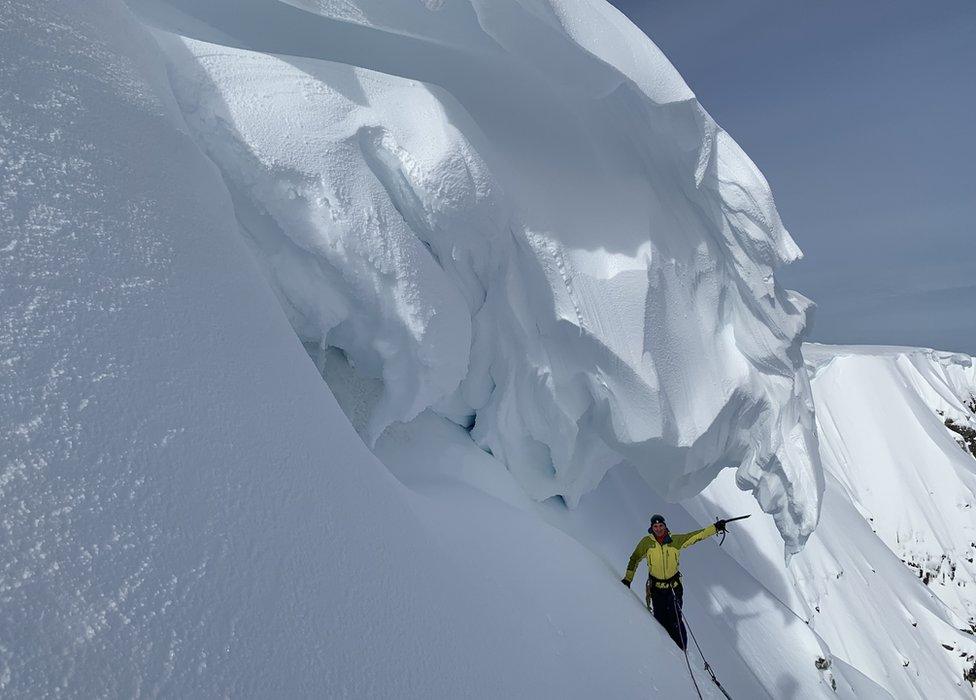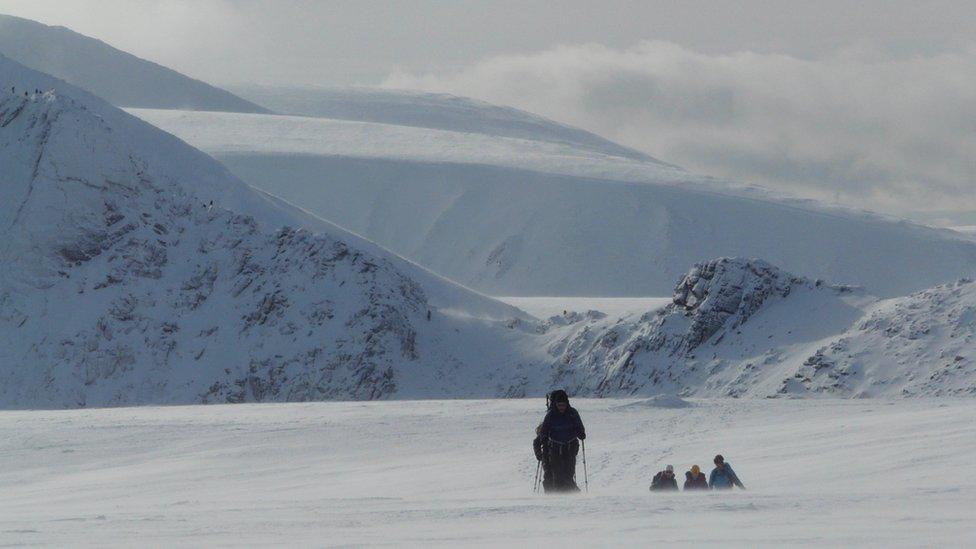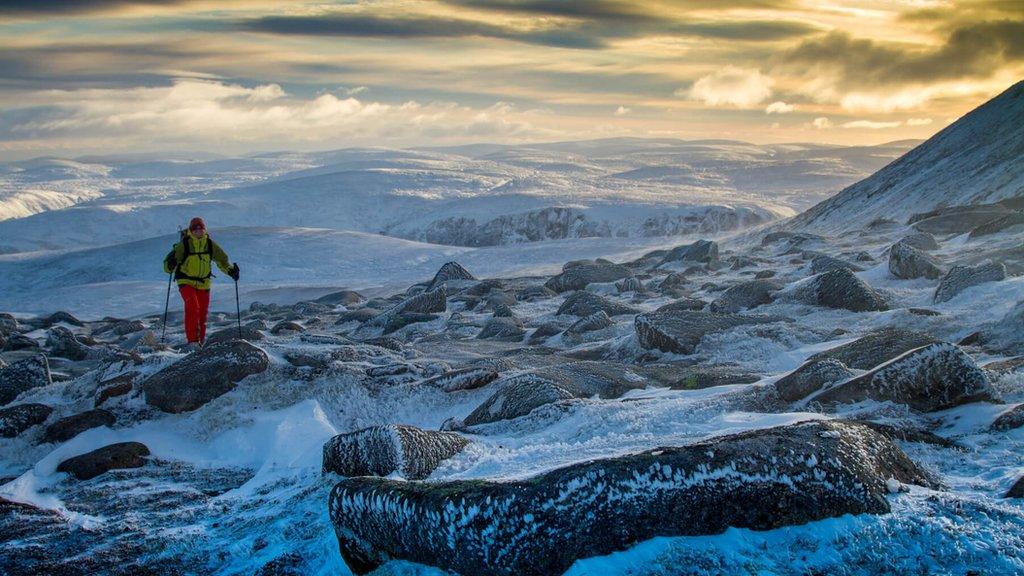Huge cornice highlights potential risk in Scottish hills
- Published

The cornice was spotted on Aonach Mor
A huge ledge of snow called a cornice has been photographed on a Lochaber mountain to highlight the risk the overhangs can pose in Scotland's hills.
Cornices are formed by wind-blown snow and can collapse under their own weight and cause avalanches, often during a thaw.
Cornices can also be mistaken as solid ground, posing a risk to hillwalkers.
The Scottish Avalanche Information Service's, external (SAIS) Lochaber team took the image on Aonach Mor on Monday.
In 2014, there were 18 recorded incidents of people falling through cornices in Scotland's mountains, prompting Mountaineering Scotland to issue a warning reminding walkers of climbers of the risk.
'Tonnes of snow'
An SAIS spokesman said: "The cornice collapse threat is quite separate from avalanche hazard.
"It is a feature than can be unpredictable in terms of when it may collapse, sometimes releasing many hundreds, or thousands in some cases, tonnes of snow onto slopes below."
He added: "With the rain and sudden warming the avalanche hazard is significant in some areas today.
"But we would expect that this hazard would diminish in the next day or two as the mountains will have been 'purged' and the snow cover will gradually diminish."
The potential avalanche risk in Lochaber and Creag Meagaidh has been rated by SAIS as "considerable".

SAIS provides avalanche forecasts for six areas, including the Northern Cairngorms
Every winter, SAIS assesses avalanche risk in six mountain areas. They are Lochaber, Glen Coe, Creag Meagaidh, Southern Cairngorms, Northern Cairngorms and Torridon.
The latest forecasting season started on 14 December and will run until about mid-April.
Human-triggered avalanches
Six avalanches were recorded by the service in the first few weeks of the new season. The number has since risen to 47.
There were 261 recorded last season and a total of 90 avalanches were recorded in the 2016-17 season - the lowest number in almost 10 years.
However, there were 350 avalanches noted by SAIS in its 2013-14 season.
During the service's 2017-18 season, 20 people in total were involved in accidental human-triggered avalanches.
Half of these people were carried down mountainsides by snow.
There were no fatalities due to avalanche activity recorded during the season, SAIS said.
- Published12 November 2018
